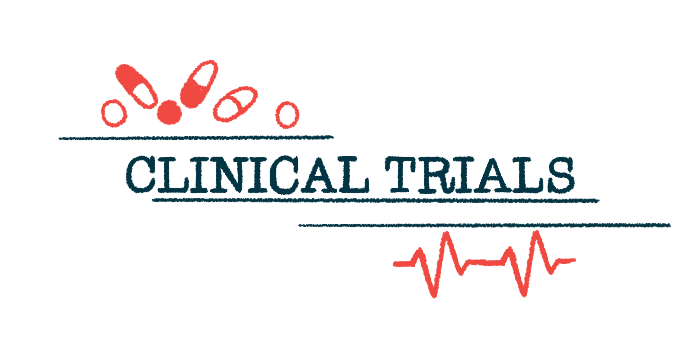Long-term Eloctate found to reduce all bleed types in Phase 3 analyses
Preventive treatment also seen to improve joint health in hemophilia A

Preventive treatment with Eloctate (efmoroctocog alfa) for up to five years led to sustained reductions in all bleed types for children, adolescents, and adults with severe hemophilia A, according to data from two Phase 3 trials and their open-label extension study.
New analyses of these pivotal trials also showed improved joint health among participants — a key finding, given that chronic joint bleeds can lead to pain and mobility issues that influence life quality.
“The longitudinal analysis reported here represents the longest duration of [Eloctate] follow-up to date, and … confirms the long-term safety and efficacy of [Eloctate] prophylaxis for preventing all types of bleeds over time in [people] with severe hemophilia A across all age groups,” the researchers wrote.
The study, “Prophylaxis with a recombinant factor VIII Fc in hemophilia A: long-term follow-up on joint health, efficacy, and safety from phase 3 studies in children/adults,” was published in Research and Practice in Thrombosis and Haemostasis.
It was funded by Sobi, which markets the therapy as Elocta in most European countries, and Sanofi, which markets Eloctate in Australia, Canada, Japan, and the U.S.
Hem A patients continued to receive Eloctate for up to 5 years post-trial
People with hemophilia A have low levels of factor VIII, known as FVIII, which is an important blood clotting protein. These low levels lead to a risk of spontaneous, unprovoked bleeding, particularly in the joints.
Factor replacement therapies aim to supply hemophilia A patients with a lab-made version of FVIII to prevent and control bleeds. Eloctate is an extended half-life product, meaning that compared with standard FVIII products, it is designed to last longer in the bloodstream.
The therapy’s safety and efficacy were demonstrated in two Phase 3 clinical trials that involved severe hemophilia A patients. One, dubbed A-LONG (NCT01181128), enrolled adults and adolescents, ages 12 and older, while the other, Kids A-LONG (NCT01458106), recruited children younger than 12.
The 165 participants in A-LONG were assigned to receive either an individualized preventive Eloctate regimen, weekly preventive treatment, or on-demand Eloctate to treat active bleeds for up to a year. Kids A-LONG enrolled 71 pediatric patients, all of whom received an individualized preventive regimen for up to six months.
An open-label extension study, called ASPIRE (NCT01454739), followed the two studies and involved participants from both. In ASPIRE, a total of 150 adolescents and adults from A-LONG and 61 children from Kids A-Long received Eloctate in any treatment regimen for up to five years.
Previously published results indicated that bleed rates in ASPIRE remained low. Further, FVIII usage and regimens were stable over a median total treatment time of 3.9 years for the A-LONG participants and 3.2 years for those from Kids A-LONG.
Now, the researchers reported more long-term data spanning the main trials and the extension phase, and performed additional analyses to evaluate the treatment’s specific effects on joint health.
As seen in previous reports, the results indicated that FVIII usage, schedule, and treatment compliance remained relatively stable throughout the trials. Bleed rates among those using preventive Eloctate were significantly reduced with treatment and remained low over a median of 4.2 years (A-LONG) and 3.4 years (Kids A-LONG).
Overall, 96.3% of bleeds in A-LONG and 93.3% of bleeds in Kids A-LONG — all treated with Eloctate — were resolved with no more than two injections.
In the final five months of the extension trial, 67% of adults/adolescents on individualized prophylaxis did not experience any bleeds, nor did 43% of children. Moreover, most patients in A-LONG were free of spontaneous bleeds (78%) and joint bleeds (70%), as were most children in Kids A-LONG (70% each).
Similarly, among the subgroup of patients who stayed on individualized preventive treatment for five years (adults/adolescents) or four years (children), bleed rates remained low and stable.
Adults and children both saw a reduction in numbers of painful joints
In the new analysis, joint health was evaluated using the Hemophilia Joint Health Score (HJHS) or the modified HJHS (mHJHS) for a subset of 78 A-LONG participants and 42 Kids A-LONG participants who received preventive Eloctate.
The results showed a sustained decrease in mHJHS or HJHS scores from the start of the trials to the final assessment in the extension phase, reflecting improvements in joint health over a median of 3.7 years in both groups.
In A-LONG, the mean change in mHJHS was 3.5 points as of the last evaluable measurement. A statistically significant reduction in the swelling subdomain also was observed. For those in Kids A-LONG, the mean change in mHJHS was 1 point.
About 30% of evaluable A-LONG patients saw a decrease in the number of painful joints.
At the trial’s start, most A-LONG participants (111 people) and some Kids A-LONG children (13 participants) had target joints, defined as a single major joint where at least three bleeds had occurred within six months.
For these patients, bleed rates in these target joints remained low on long-term Eloctate, resulting in a 99.6% overall resolution of evaluable target joints with low rates of recurrence.
In the subset of A-LONG participants — 122 in all — using preventive Eloctate who had the highest bleed rates during the first year of treatment, bleed rates decreased by the end of ASPIRE, with improvements in joint health and resolution of target bleeds.
Overall, long-term preventive treatment with Eloctate “clearly demonstrated sustained clinical benefits, including improved joint health and low [bleed rates],” the researchers wrote.
For hemophilia patients, the resolution of joint bleeds and improved joint health suggests positive long-term effects, including the prevention of pain and mobility issues that typically can result.
Researchers said a “key strength” of their analyses was the ASPIRE study design, which “approximated real-world clinical practice with individualized dosing regimens.”
The team suggested that “future studies could consider supplementing these results with objective outcome measures of joint health, such as musculoskeletal ultrasound.”








